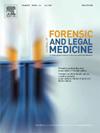不寻常的尸检,不寻常的DNA组织,但有用的遗传图谱:一个来自人类组织的DNA图谱的案例
IF 1.2
4区 医学
Q3 MEDICINE, LEGAL
引用次数: 0
摘要
非新鲜尸体解剖的特点是固有的困难,因为它需要采用遗传和组织学调查技术,以具体情况。作者在这篇论文中提出的案例涉及一名年轻女子的尸体,她已经被解剖,然后用20%中性缓冲甲醛(一种保存剂)处理,使其能够洲际运输,然后再次被解剖。应法官的要求,进行了第二次司法尸检,以核实死因并进行基因调查。由于无法获得新鲜组织进行遗传分析,因此采用了三种不同的组织基质:视网膜、肝脏和髂腰肌。所采用的生物基质被认为不太可能与甲醛接触,因此可能不太容易产生由甲醛对DNA结构的作用引起的伪影。所有三种生物基质均用于获得遗传图谱。特别是,从视网膜获得的遗传数据被发现比从髂腰肌获得的遗传数据更好。反过来,从髂腰肌获得的基因图谱被发现比从肝脏样本获得的基因数据更好。本文章由计算机程序翻译,如有差异,请以英文原文为准。
Unusual autopsy, unusual tissue(s) for DNA, but a useful genetic profile: A case of the DNA profiling from the human tissue of challenged provenance
The autopsy of the non-fresh cadaver is characterized by inherent difficulties in that it requires the adoption of genetic and histological investigation techniques to the specific case. The case that the authors present in this paper concerns the corpse of a young woman who had already been autopsied, then treated with 20 % neutral buffered formaldehyde, a preserving agent, to enable its intercontinental transport, and then autopsied again. At the judge's request, a second judicial autopsy was performed in order to verify the cause of death and to carry out genetic investigations. As fresh tissue was not available to perform the genetic analysis, three different tissue matrices were taken: retina, liver, and iliopsoas muscle. The biological matrices taken were chosen as they were considered less likely to be in contact with formaldehyde and therefore probably less prone to artifacts caused by the action of formalin on the DNA structure. All three biological matrices were used to obtain a genetic profile. In particular, the genetic data obtained from the retina was found to be better than the genetic profile obtained from the iliopsoas muscle. In turn, the genetic profile obtained from the iliopsoas muscle was found to be better than the genetic data obtained from the liver sample.
求助全文
通过发布文献求助,成功后即可免费获取论文全文。
去求助
来源期刊

Journal of forensic and legal medicine
MEDICINE, LEGAL-
CiteScore
2.70
自引率
6.70%
发文量
106
审稿时长
57 days
期刊介绍:
The Journal of Forensic and Legal Medicine publishes topical articles on aspects of forensic and legal medicine. Specifically the Journal supports research that explores the medical principles of care and forensic assessment of individuals, whether adult or child, in contact with the judicial system. It is a fully peer-review hybrid journal with a broad international perspective.
The Journal accepts submissions of original research, review articles, and pertinent case studies, editorials, and commentaries in relevant areas of Forensic and Legal Medicine, Context of Practice, and Education and Training.
The Journal adheres to strict publication ethical guidelines, and actively supports a culture of inclusive and representative publication.
 求助内容:
求助内容: 应助结果提醒方式:
应助结果提醒方式:


